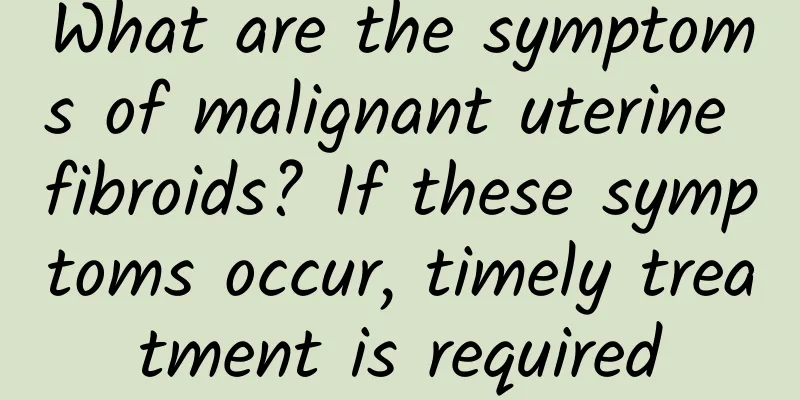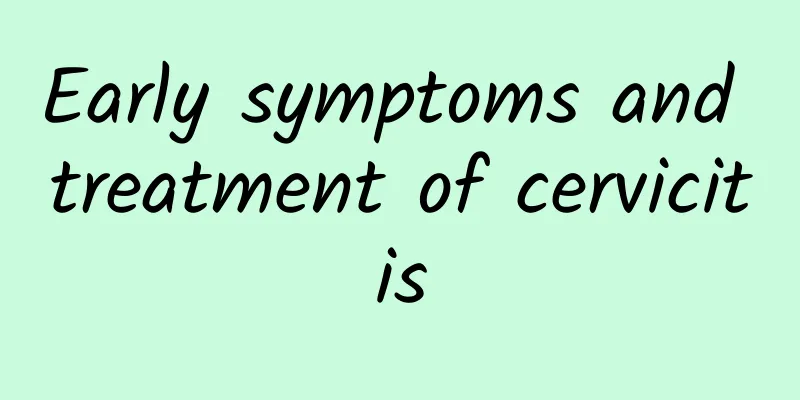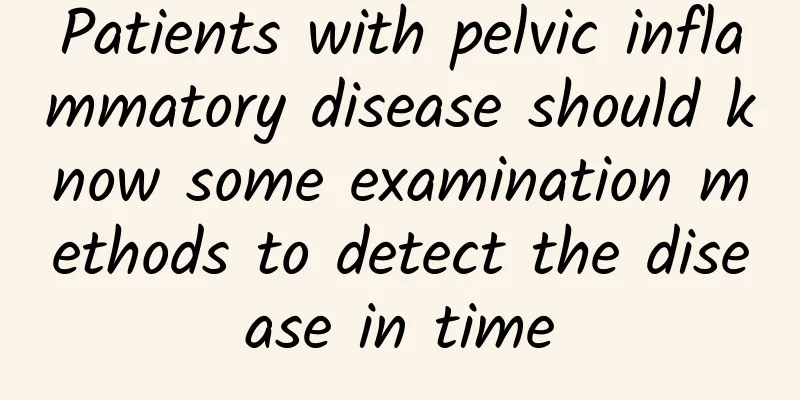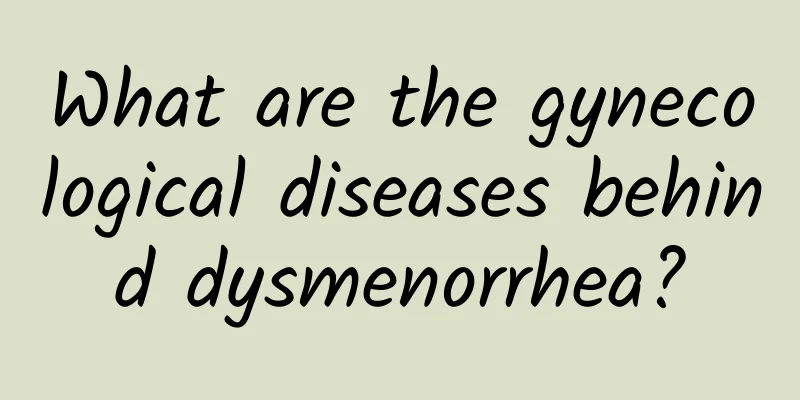What are the symptoms of malignant uterine fibroids? If these symptoms occur, timely treatment is required

|
Clinically, uterine fibroids are generally divided into benign and malignant diseases. Malignant symptoms are often caused by poor treatment of benign diseases. What are the symptoms of malignant uterine fibroids? In daily life, only by understanding these diseases can we help us detect the disease as soon as possible. Experts introduce us to the common symptoms of malignant uterine fibroids: Symptom 1. Irregular vaginal bleeding: This is a common symptom of malignant uterine fibroids, and bleeding may occur at any time except for hormone therapy. If a postmenopausal woman has vaginal bleeding similar to menstruation, it indicates the possibility of uterine cancer. Symptom 2. Weight loss: weakness, pain in the lower abdomen, back, and legs. These symptoms usually occur in the middle and late stages, when tumor cells usually metastasize or spread. Symptom 3: Abdominal mass: Clinical practice has confirmed that lower abdominal mass is usually the main complaint of patients with uterine fibroids, up to 69.6%. Sometimes it may be the only symptom of fibroids. This often occurs in intramural fibroids that do not affect the endometrium, especially in the uterine fundus or under the pedunculated serosa. Nowadays, with the rapid development of medical technology, there are many ways to treat uterine fibroids. At present, the treatment of malignant uterine fibroids mainly adopts surgical treatment, such as hysterectomy (including total resection and hemisection) and myomectomy. Resection is generally suitable for the size of the uterus with a 3-month pregnancy. Although the fibroids are not large, the symptoms are obvious, or the fibroids grow rapidly, and malignancy cannot be ruled out; resection is mainly suitable for unmarried and childless women under 35 years old. Once symptoms of malignant uterine fibroids appear, they can be treated with minimally invasive surgery. Minimally invasive techniques are also widely used in clinical practice. Minimally invasive hysteroscopic and laparoscopic treatment of uterine fibroids can avoid the risks of incomplete traditional treatment. |
<<: What are the symptoms of uterine fibroids? What harm can uterine fibroids cause?
Recommend
Let me tell you about some common symptoms of cervical erosion
Nowadays, many women may suffer from cervical ero...
Healthy sweetheart! Raisins add flavor to light dishes
Light summer fruit and vegetable meals, make full...
What are the early symptoms of ectopic pregnancy?
What are the early symptoms of ectopic pregnancy?...
What causes cervicitis?
Cervicitis may be caused by a variety of factors,...
What should we pay attention to when it comes to cervical erosion?
What should we pay attention to when it comes to ...
Women should pay attention to these to prevent vulvar leukoplakia
Vulvar leukoplakia is very harmful to the female ...
How much does threatened abortion cost?
Abortion refers to the instability of the fetus i...
Do gynecological diseases affect menstruation?
Gynecological diseases are common problems of the...
How long does it take from admission to discharge for ovarian cyst surgery?
How long does it take from admission to discharge...
What is pelvic inflammatory mass? A mass disease
This type of pelvic inflammatory disease can caus...
What are the main causes of cervical erosion? Summarize the 4 causes of cervical erosion
Cervical erosion is a common gynecological diseas...
Inattention to diet can easily cause ovarian cyst disease in women
Women are often affected by some gynecological di...
Anthony Wong lost 15 kg in a month by eating bean sprouts! Chinese medicine doctor Huang Huijuan: "Do this" before eating to avoid being too cold
The tiny bean sprouts have magical benefits, have...
To relieve menopausal syndrome, you should understand its typical manifestations
Generally speaking, women go through menopause be...
Correct and effective methods are needed to regulate dysmenorrhea
From ancient times to the present, dysmenorrhea h...









